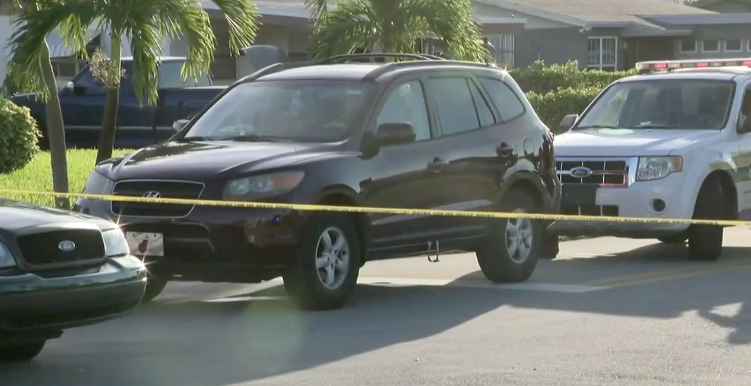Last weekend, 1-year-old Neallie Junior Saxon III was playing with other neighborhood kids in their front yards in Broward County, Florida, when he did what young kids do and went after a ball, into the street.
The driver of a Hyundai Santa Fe SUV hit Neallie and did not even slow down until she reached a stop sign, at which point, onlookers dragged her out and beat her, according to the Miami Herald.
"He was my pride and joy," Neallie's grief-stricken mother wrote on Facebook. "You will always be loved and missed. Mommy and daddy are being as strong as we can be."
The identity of the driver wasn't released, but as is common in this kind of story, she is already being absolved by the police and the media. The Herald reports:
The toddler, who would have been 2 in December, was shorter than the bumper of the 2007 four-door Hyundai Santa Fe SUV. Broward Sheriff’s Office deputies said it was unlikely the woman driving would have seen the little boy, especially with all the other kids running around in the road.
There's a lot to unpack in that passage, but one of the more striking questions it raises is this: Why are companies allowed to sell mass market vehicles with such a huge blind spot in front that children are rendered invisible? Where are the regulators at the National Highway Traffic Safety Administration?
The specific dangers of SUVs have been out in the open for a long time, and it's no secret that pedestrians are at particular risk.
In 2015, researchers at the University of Michigan determined that pedestrians are more than three times as likely to be killed when struck by an SUV than when struck by a regular passenger vehicle. The critical design factor is the high, blocky front end, which pushes people below the wheels instead of over the hood.
Clay Gabler, a mechanical engineer who researched pedestrian safety in SUV collisions for Rowan University in Glassboro, New Jersey, was warning about the front end design of SUVs back in 2003.
Why are big square-nosed SUVs still everywhere? Because they sell. Those front end features that kill and maim pedestrians are popular with consumers.
Keith Bradsher, a former New York Times Detroit bureau chief, wrote a scathing account of the production and marketing of sport utility vehicles in 2002, "High and Mighty."
SUV drivers are similar to minivan drivers demographically, but they are more "self-oriented" psychologically, Bradsher reported. They are more fearful of crime, less likely to be involved in their communities, and less committed to their families, he wrote.
In 2000, DaimlerChrysler Director of Market Research David Bostwick told Bradsher that for consumers, ''It's not safety as the issue, it's aggressiveness, it's the ability to go off the road." Research also showed that SUV owners drive faster and place a lower value on being courteous on the road.
SUVs are designed specifically to appeal to this psychological profile, executives admitted:
DaimlerChrysler has chosen high-riding designs even for the two-wheel-drive versions of its sport utilities, even though they are unlikely to be driven over rough terrain and are therefore unlikely to need to ride higher, said David C. McKinnon, DaimlerChrysler's director of vehicle exterior design. Mr. McKinnon said the company's highest executives had told him repeatedly to 'get them up in the air and make them husky.'
Up in the air, where drivers can't see little kids like Neallie Saxon. For no reason other than style.
When the New Scientist published Gabler's research 14 years ago, it carried a warning:
But in the US, pedestrians are losing the safety battle. “Despite over 4000 pedestrian deaths a year, there are no pedestrian impact safety regulations under serious consideration in the US,” Gabler says.
Since then pedestrian deaths have increased nearly 50 percent. Lives like Neallie's are the price we pay to satisfy consumer preferences and maximize automakers' profits.






